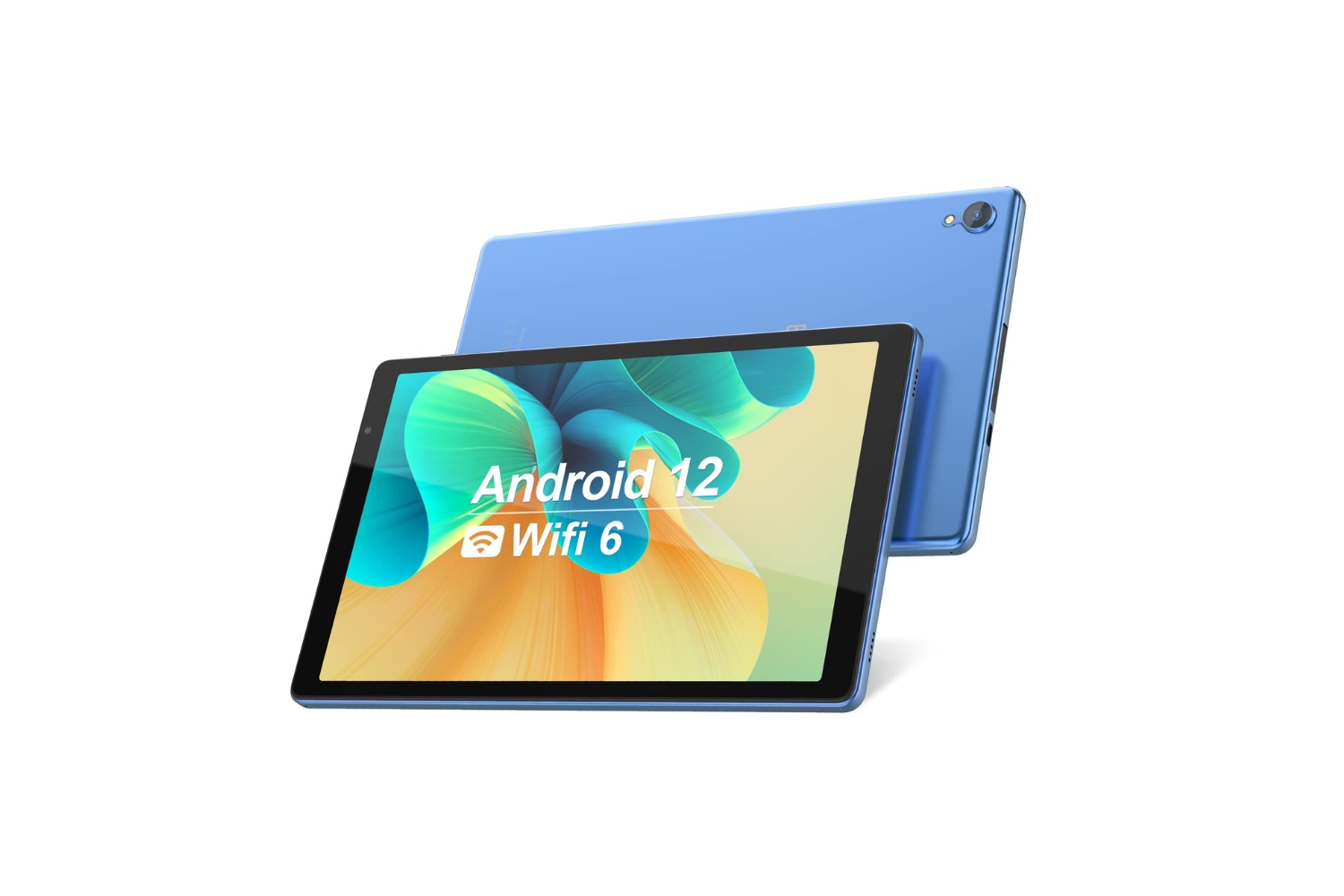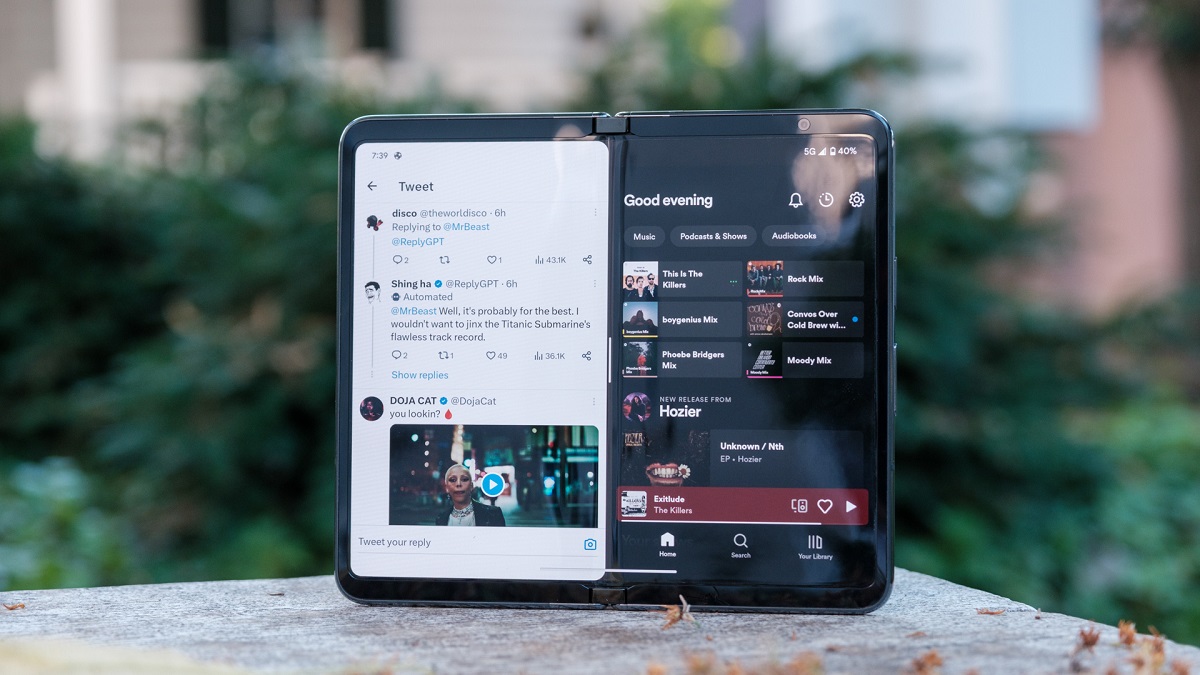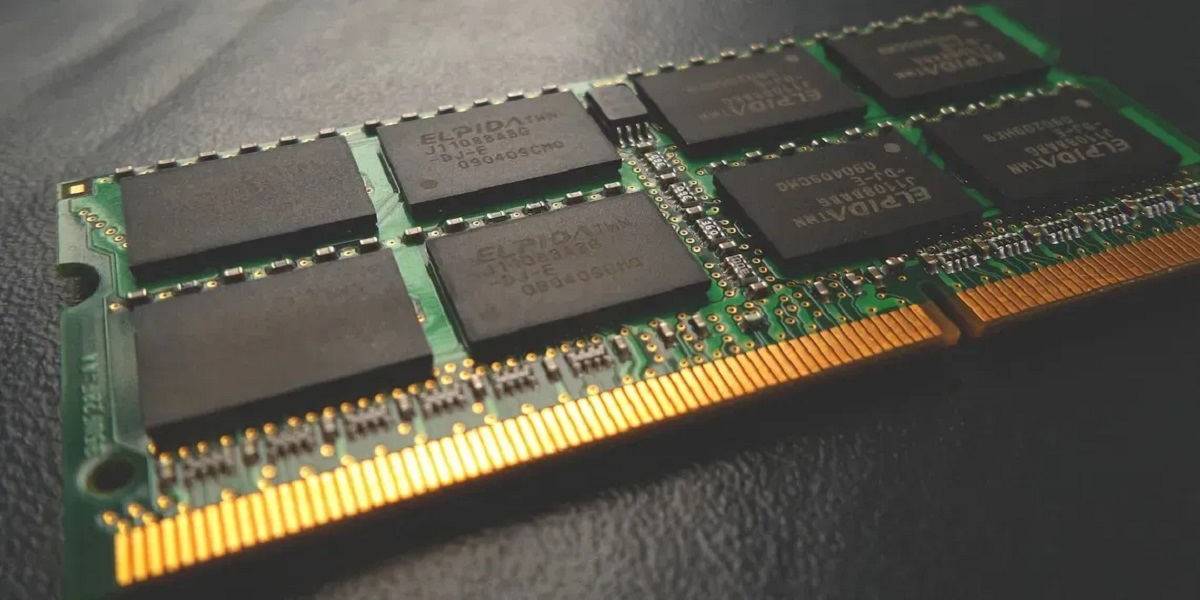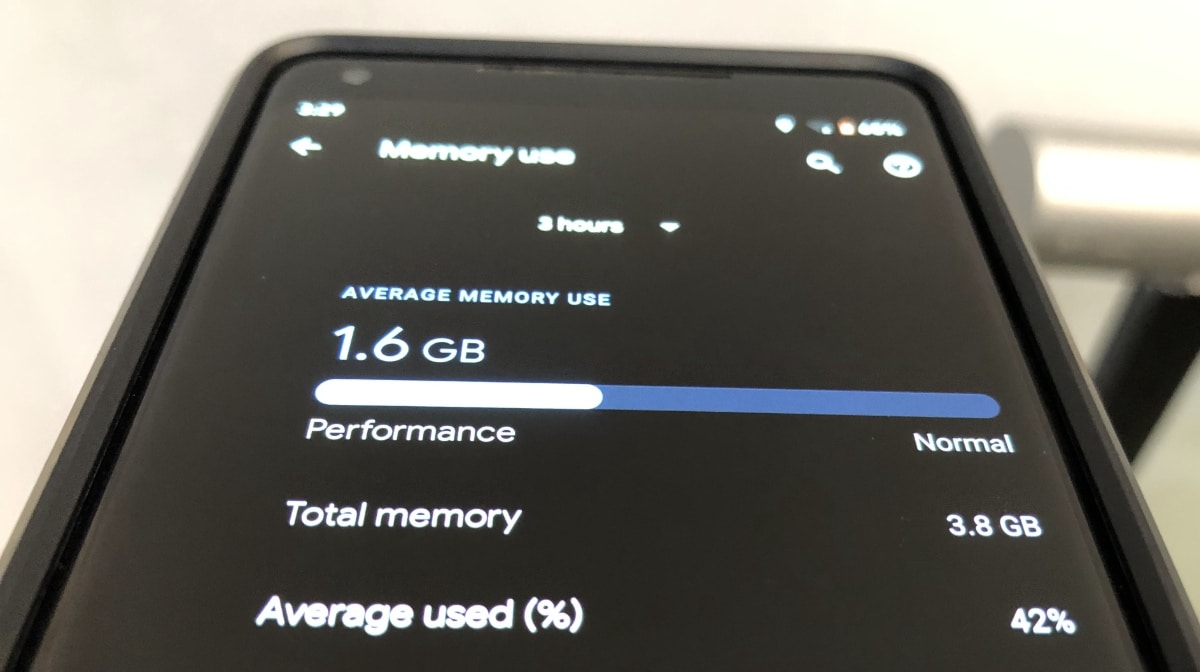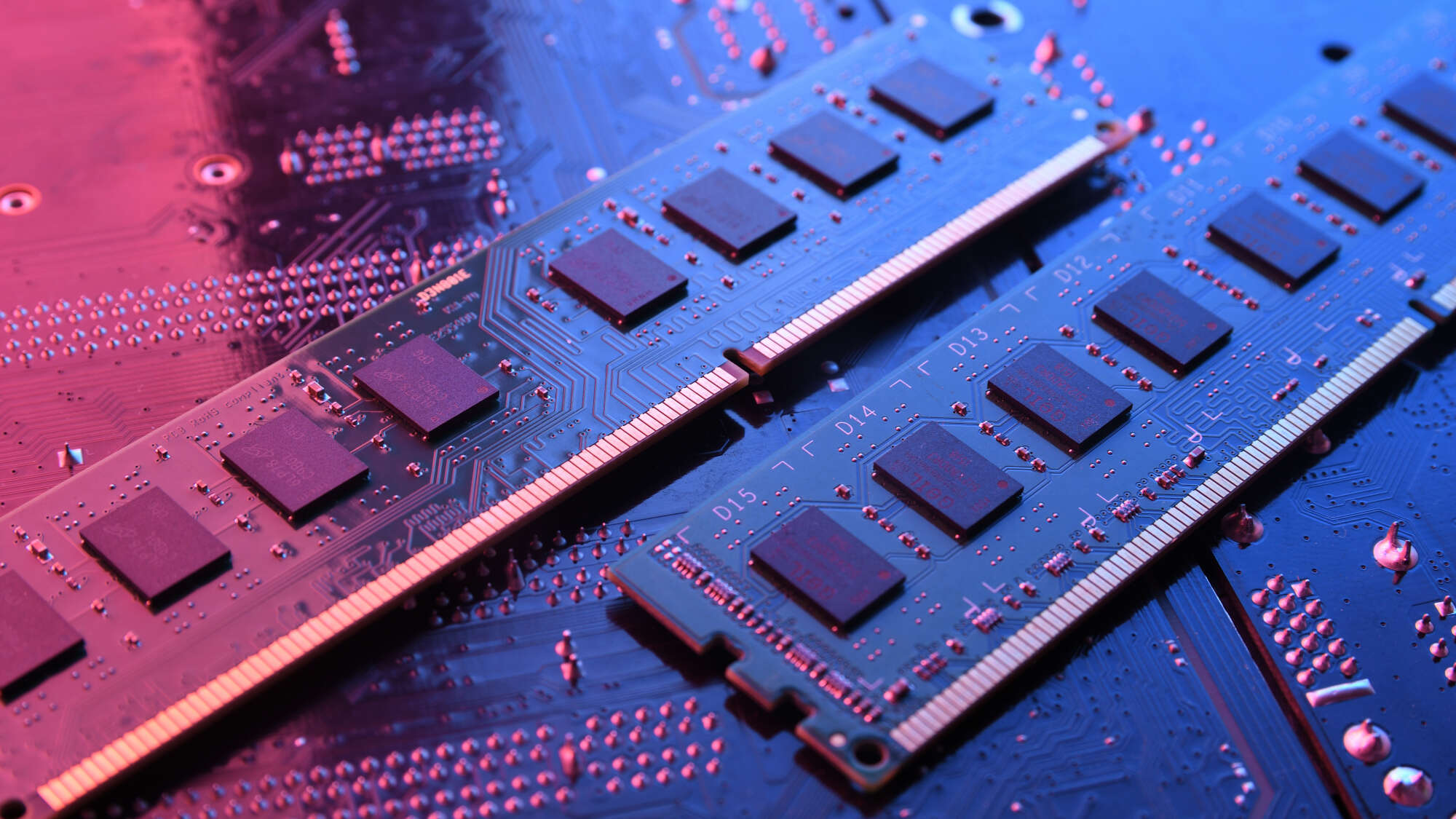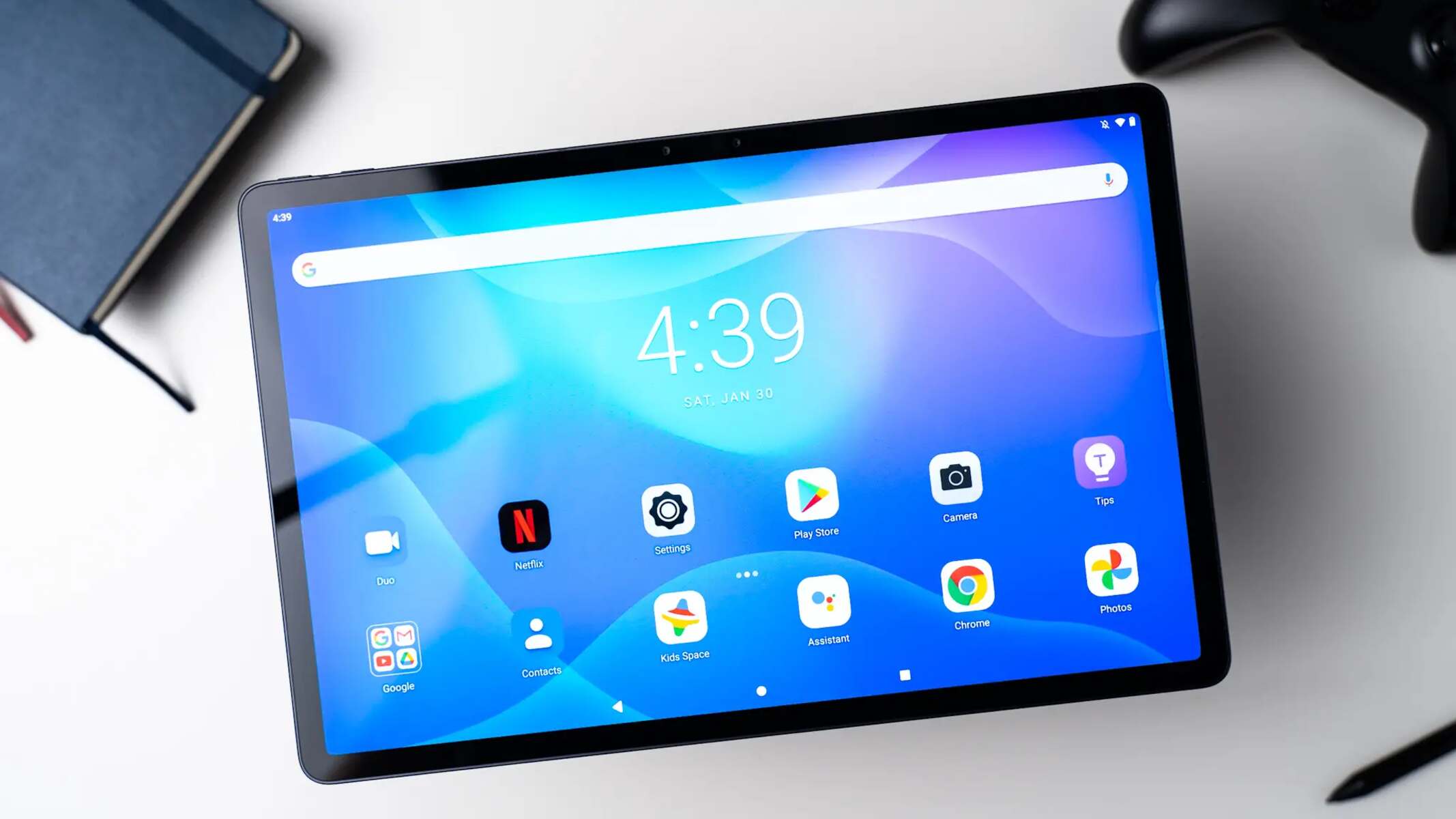Introduction
Welcome to our guide on how much RAM you need for an Android tablet. As the demand for tablets continues to grow, consumers are faced with countless options, each boasting varying features and specifications. Among these specifications, RAM plays a crucial role in determining the performance and multitasking capabilities of your Android tablet.
RAM, short for Random Access Memory, is a type of volatile memory that stores the data and instructions needed for your device to run applications and perform tasks. It is a vital component for any electronic device, including Android tablets, as it allows for the smooth and efficient execution of programs.
Have you ever tried running multiple apps on your tablet only to experience lag, slow responsiveness, or even crashes? These issues can often be attributed to insufficient RAM. With more RAM, your tablet can handle multiple applications simultaneously, preventing these performance issues and providing you with a better user experience.
Choosing the right amount of RAM for your Android tablet is crucial, as it directly impacts the device’s overall performance. While it may be tempting to opt for the highest RAM capacity available, it’s essential to understand your tablet’s requirements and your own usage habits to make an informed decision. In this guide, we will explore the recommended RAM specifications for Android tablets, factors to consider when choosing RAM, and how to determine the appropriate amount of RAM for your device.
So, if you are curious about how much RAM you need for your Android tablet, buckle up as we take you through everything you need to know to make the best decision for your device.
What is RAM?
RAM, an acronym for Random Access Memory, is a crucial component in any computing device, including Android tablets. It serves as temporary storage where data and instructions are stored while your tablet is running applications and performing tasks.
Unlike the device’s internal storage, which holds long-term data, RAM is volatile memory. This means that its contents are erased once the device is powered off or restarted. RAM allows your tablet to quickly access the data it needs to perform operations, resulting in faster app launches, smoother multitasking, and overall improved performance.
Think of RAM as a workspace for your tablet. The more RAM your device has, the more tasks it can handle simultaneously without experiencing slowdowns or performance issues. When you launch an app, it is loaded into RAM, enabling the device’s processor to quickly access the app’s data and execute commands. As you switch between apps or perform various tasks, RAM efficiently manages and allocates the required resources to ensure smooth operation.
It’s essential to note that RAM capacity alone does not determine the performance of your Android tablet. While more RAM allows for better multitasking and faster app switching, the overall performance of the device relies on a combination of factors, including the processor speed, software optimization, and the efficiency of the operating system.
Now that we have a basic understanding of what RAM is and its role in an Android tablet, let’s delve deeper into why RAM is so important for these devices and how it impacts their performance.
Why is RAM Important for Android Tablets?
RAM plays a crucial role in the performance and functionality of Android tablets. Since tablets are designed for multitasking and running multiple applications simultaneously, having sufficient RAM is essential for a smooth and efficient user experience.
One of the primary functions of RAM is to store data and instructions for the applications you are currently using. When you launch an app on your Android tablet, it gets loaded into RAM, allowing for quick access to its data and resources. The more apps you have running at the same time, the more RAM is required to manage their data and ensure smooth operation.
Insufficient RAM can lead to a variety of performance issues on an Android tablet. When the available RAM is too low, the device has to constantly swap data in and out of the limited memory, resulting in slower app launches, laggy response times, and overall decreased performance. This can be especially noticeable when switching between multiple apps, causing delays and potential app crashes.
Moreover, as technology advances and app developers release more resource-intensive applications, the demand for RAM continues to increase. Many modern apps, such as games, multimedia apps, and productivity tools, require a significant amount of RAM to run smoothly and provide a seamless user experience. Having sufficient RAM ensures that your tablet can handle these demanding apps without experiencing performance bottlenecks.
In addition to running multiple apps, RAM also plays a crucial role in web browsing. When you open a web page on your tablet, the browser uses RAM to store the page’s content, images, and scripts. Insufficient RAM can lead to slower page loading times, unresponsive scrolling, and overall sluggish browsing experience.
Furthermore, having ample RAM is necessary for efficient multitasking on an Android tablet. If you frequently switch between different applications or need to run resource-intensive tasks simultaneously, such as editing videos or playing graphics-intensive games, having enough RAM becomes even more critical. It ensures that your tablet can handle the workload without freezing or crashing.
In summary, RAM is essential for Android tablets as it allows for seamless multitasking, improved app performance, faster web browsing, and overall smoother user experience. Having sufficient RAM ensures that your tablet can handle the demands of modern apps and effectively manage resources to provide optimal performance.
Recommended RAM for Android Tablets
When it comes to determining the recommended RAM for an Android tablet, several factors need to be considered. The ideal RAM capacity depends on your specific usage requirements, the types of apps you use, and the overall performance you expect from your device.
For basic tasks such as web browsing, email, and social media apps, a minimum of 2GB of RAM should suffice. This amount of RAM will provide a smooth experience for everyday use and allow you to run these apps simultaneously without significant performance issues.
If you frequently use more resource-intensive apps, such as gaming, video editing, or graphic design tools, it is recommended to opt for a tablet with 4GB or more of RAM. These apps require additional memory to operate smoothly and efficiently, ensuring that your tablet can handle the demands of these applications without any lag or slowdowns.
Keep in mind that as technology advances and app requirements increase, it is generally advisable to choose a tablet with more RAM than the minimum recommended specifications. With additional RAM, you can future-proof your device and ensure that it can handle upcoming app updates and new features without sacrificing performance.
It’s worth noting that some higher-end Android tablets, particularly those designed for power users and professionals, offer even higher RAM options, ranging from 6GB to 8GB or more. These tablets are specifically built to provide maximum performance and multitasking capabilities, making them suitable for heavy multitaskers, gamers, and those who work with complex applications.
Ultimately, the recommended RAM for an Android tablet depends on your usage patterns and the specific apps you plan to use. Assess your needs and consider the type of tasks you’ll be performing on your tablet to determine the right balance between performance and cost.
Keep in mind that RAM alone does not guarantee exceptional performance. It is equally important to consider other aspects such as the processor, storage speed, and software optimization. A well-rounded device with the right combination of specifications will provide the best user experience.
In the next section, we will delve deeper into the various factors to consider when choosing RAM for Android tablets to help you make an informed decision.
Factors to Consider when Choosing RAM for Android Tablets
When selecting the appropriate RAM capacity for your Android tablet, it’s essential to consider various factors that can impact the overall performance and functionality of your device. Here are some key factors to keep in mind:
1. Usage Requirements: Assess your specific needs and usage patterns. The types of apps and tasks you will be running on your tablet will determine the amount of RAM you require. For basic tasks, such as web browsing and social media, 2GB of RAM should be sufficient. However, for more resource-intensive usage, such as gaming or multimedia editing, opt for tablets with 4GB or more of RAM.
2. Future-proofing: Consider the longevity of your tablet. As technology advances and app requirements increase, it’s a good idea to future-proof your device by choosing a tablet with more RAM than the minimum recommended specifications. This will ensure that your tablet remains capable of handling future app updates and newer, more demanding applications.
3. Multitasking: If you frequently switch between multiple apps or need to run resource-intensive tasks simultaneously, prioritize tablets with higher RAM capacities. More RAM allows for smoother multitasking, preventing lag or slowdowns when switching between apps and ensuring overall better performance.
4. Budget: RAM capacity can significantly impact the price of an Android tablet. Determine your budget and consider the trade-off between performance and cost. While higher RAM capacities offer better performance, they also come at a higher price point. Find the right balance based on your budget and performance needs.
5. Brand and Model: Consider the reputation of the brand and the specific model you are interested in. Some manufacturers are known for producing Android tablets with better performance optimization and efficient RAM management, even with lower RAM capacities. Research user reviews and expert opinions to gauge the performance and reliability of different models.
6. Operating System: The version of the operating system on your Android tablet can affect RAM requirements. Newer versions of Android generally have better memory management and optimization, allowing for efficient utilization of the available RAM. Ensure that the tablet you choose has an up-to-date operating system to maximize the benefits of the RAM capacity.
Consider these factors when choosing the RAM capacity for your Android tablet. By evaluating your specific needs and comparing the available options, you can make an informed decision that aligns with your requirements and budget.
How Much RAM do you Really Need for an Android Tablet?
Determining the exact amount of RAM you need for an Android tablet can be a subjective decision, as it depends on your individual usage habits and the specific apps and tasks you plan to run. However, there are some general guidelines to help you gauge the ideal RAM capacity for your tablet:
1. Basic Tasks: If you primarily use your tablet for everyday tasks like web browsing, email, social media, and light productivity apps, a tablet with 2GB of RAM should be sufficient. This capacity will allow you to perform these tasks smoothly without encountering significant performance issues.
2. Moderate Multitasking: For users who engage in moderate multitasking or use more resource-intensive apps like media streaming, light gaming, or content creation tools, it is recommended to opt for a tablet with 4GB of RAM. This capacity will provide better performance and faster app switches, minimizing lag and ensuring a smoother multitasking experience.
3. Heavy Multitasking and Resource-Intensive Apps: If you regularly use your tablet for heavy multitasking, run demanding apps simultaneously, or engage in activities like gaming, video editing, or professional work that require extensive RAM usage, you should consider tablets with 6GB or more of RAM. These higher RAM capacities will provide the necessary headroom for the smooth operation of multiple apps and resource-intensive tasks.
Remember that while more RAM generally results in better performance, it is not the sole determinant. Other factors, such as processor speed, software optimization, and storage speed, can also impact the overall performance of your tablet.
It’s important to strike a balance between your needs and budget when deciding on the RAM capacity for your Android tablet. Opting for excessive RAM that surpasses your requirements may not always yield noticeable improvements in performance, but it will come at a higher cost. Evaluate your usage patterns, assess the types of apps you use, and consider future needs to make the most informed decision.
Lastly, keep in mind that Android tablets allow for greater flexibility compared to smartphones when it comes to RAM expansion. If you foresee a potential need for more RAM in the future, consider tablets that offer expandable memory options, such as microSD card slots. This way, you can increase the available RAM in the future to accommodate changing requirements.
By considering your usage patterns, the types of apps you use, and balancing performance and budget, you can determine the ideal RAM capacity for your Android tablet, ensuring a smooth and efficient user experience.
RAM Management in Android Tablets
RAM management is a critical aspect of ensuring optimal performance and efficient resource allocation in Android tablets. Android operating systems employ various mechanisms to effectively manage RAM, allowing for smooth multitasking and improved user experience. Here are some key aspects of RAM management in Android tablets:
1. App Prioritization: Android’s operating system has built-in mechanisms to prioritize the allocation of RAM to apps based on their importance and usage patterns. The OS intelligently manages which apps should remain active in the background and which ones should be closed or put in a low-power state. This ensures that RAM resources are efficiently allocated to the apps that are currently in use.
2. Caching and Preloading: Android utilizes caching and preloading techniques to store frequently accessed data and app resources in RAM. By doing so, the system can quickly retrieve this information when needed, resulting in faster app launches and smoother overall performance. While caching and preloading help enhance user experience, they also consume RAM resources. However, the operating system is designed to automatically clear cached data when RAM becomes scarce.
3. RAM Compression: In recent Android versions, RAM compression has become a common technique employed to optimize RAM usage. It compresses data stored in RAM to save space and improve the overall capacity of RAM. This technology helps to keep more apps in RAM and reduce the need for swapping data in and out of the storage, resulting in improved performance and responsiveness.
4. Low Memory Warnings: When your Android tablet’s available RAM is running low, the operating system sends warnings and notifications to alert you. These warnings indicate that the device is approaching its memory limits, which may cause performance issues. The notifications often recommend closing unused apps or clearing cached data to free up RAM and improve performance.
5. RAM Optimization Apps: There are various third-party apps available on the Google Play Store that claim to optimize RAM usage in Android tablets. While these apps may provide temporary benefits, it’s important to exercise caution as excessive RAM optimization can lead to adverse effects. Android’s built-in RAM management mechanisms are typically sufficient to handle the allocation and deallocation of resources effectively.
It’s important to note that RAM management is a dynamic process in Android tablets, with the operating system continuously adjusting the allocation of resources based on the user’s actions and the device’s requirements. The system strives to strike a balance between providing a seamless user experience and efficient utilization of available memory resources.
By implementing various RAM management techniques, Android tablets ensure that the right apps receive the necessary resources while conserving memory and optimizing performance. With effective RAM management, Android tablets can handle multitasking, resource-intensive apps, and provide a smooth user experience.
Benefits of Having Adequate RAM in an Android Tablet
Having adequate RAM in an Android tablet offers several significant benefits that contribute to a smoother, more efficient user experience. Here are some key advantages of having sufficient RAM:
1. Smooth Multitasking: One of the primary benefits of having ample RAM is the ability to multitask seamlessly. With more RAM, you can run multiple apps simultaneously and switch between them without experiencing significant performance drops or lag. This is especially useful for users who frequently juggle between various applications or use resource-intensive apps that require substantial memory resources.
2. Improved App Performance: Adequate RAM enables apps to load faster and run more smoothly. When apps are loaded into RAM, they can access data and resources quickly, resulting in faster app launches, smoother navigation, and better overall performance. This is particularly beneficial for memory-intensive apps such as games, video editing tools, and graphic design applications.
3. Enhanced Web Browsing Experience: A tablet with ample RAM can provide a more responsive and enjoyable web browsing experience. With sufficient memory, your browser can store webpage data and resources in RAM, allowing for faster page loading times, smoother scrolling, and improved overall browsing performance. This is especially important when accessing media-rich websites or opening multiple tabs simultaneously.
4. Efficient App Switching: In devices with adequate RAM, app switching becomes a seamless experience. You can quickly transition between applications without experiencing delays or interruptions. This feature is particularly useful for users who frequently switch between productivity apps, messaging platforms, and content consumption apps.
5. Reduced Lag and Performance Issues: Insufficient RAM can lead to system slowdowns, lag, and performance issues, especially when running resource-intensive or memory-hungry applications. Having enough RAM ensures that you can use these applications without experiencing any significant slowdowns or performance bottlenecks. Your tablet will be able to efficiently handle the demands of apps, resulting in a smoother and more enjoyable user experience.
6. Future-Proofing: As technology advances, apps tend to become more resource-intensive. Opting for a tablet with sufficient RAM provides future-proofing, ensuring that your device can handle upcoming app updates and new features without sacrificing performance. This allows you to use your tablet for a longer time without experiencing significant slowdowns due to outdated hardware.
Having adequate RAM in your Android tablet is crucial for maximizing its performance and ensuring a seamless user experience. It allows for smooth multitasking, improves app performance, enhances web browsing capabilities, reduces lag, and future-proofs your device. When choosing a tablet, consider your usage requirements and opt for a model with the right amount of RAM to meet your needs.
How to Check the RAM Capacity of your Android Tablet
Checking the RAM capacity of your Android tablet can be done easily through the device’s settings menu. Here’s a step-by-step guide on how to check the RAM capacity:
1. Open Settings: Start by opening the Settings app on your Android tablet. You can usually find the Settings app in your app drawer or swipe down from the top of the screen and tap on the gear-shaped icon.
2. Navigate to Device Information or About Tablet: In the Settings menu, look for options related to device information or about tablet. The exact location of this option may vary depending on your Android version and the manufacturer’s skin.
3. Locate the RAM Information: Once you’ve located the device information or about tablet section, look for the RAM information. It may be listed as RAM, Memory, or something similar.
4. Check the RAM Capacity: In the RAM information section, you will see the total RAM capacity of your Android tablet. It is usually displayed in gigabytes (GB). For example, if your tablet has 4GB of RAM, it will be stated as “4.00 GB”.
5. Additional Information: In some cases, you may also find additional information about the RAM, such as the RAM type (e.g., LPDDR4) or the RAM speed. This additional information can provide more insights into the technical specifications of your device’s RAM.
If you are unable to locate the RAM information in the device information or about tablet section of your Android tablet settings, you can also try searching for it using the search function within the settings app. Simply type “RAM” or “Memory” in the search bar, and it should help you locate the relevant information.
It’s worth noting that the RAM capacity listed in the settings menu represents the total installed RAM on your tablet. Keep in mind that a portion of this RAM is typically reserved for system operations, so the available RAM for app usage may be slightly lower.
By following these steps, you can easily check the RAM capacity of your Android tablet. Understanding the RAM capacity of your device can help you gauge its performance capabilities and make informed decisions about app usage and device optimization.
Frequently Asked Questions about RAM for Android Tablets
1. Can I upgrade the RAM on my Android tablet?
Unfortunately, most Android tablets do not allow for RAM upgrades. The RAM is typically soldered onto the device’s motherboard and cannot be easily modified. It’s essential to consider your future RAM needs when purchasing a tablet, as upgrading the RAM later may not be possible.
2. Does more RAM always mean better performance?
While more RAM generally improves performance, it is not the sole determining factor. Other aspects such as processor speed, software optimization, and storage speed also contribute to the overall performance of an Android tablet. It’s important to find the right balance among these specifications for optimal performance.
3. Can too much RAM be a problem?
While having more RAM generally provides better multitasking capabilities, excessive RAM may not always result in noticeable performance improvements. It can lead to higher power consumption and increased costs. It’s best to consider your specific usage requirements and opt for a comfortable amount of RAM that aligns with your needs.
4. How can I optimize RAM usage on my Android tablet?
Android operating systems are designed to efficiently manage RAM usage. However, you can take steps to optimize RAM usage by closing unused apps, clearing cached data, and avoiding resource-intensive apps when not necessary. Additionally, regular device updates and software optimizations provided by the manufacturer can help enhance RAM management.
5. Do tablets with more RAM have better battery life?
While RAM can impact power consumption to some extent, the overall battery life of a tablet is influenced by various factors, including the display size, CPU efficiency, and battery capacity. Simply having more RAM does not guarantee better battery performance. It’s important to consider all aspects of the tablet’s specifications and read reviews to gauge its battery life.
6. Can I use virtual RAM or pagefile on my Android tablet?
No, unlike desktop operating systems, Android does not have built-in support for virtual RAM or pagefile usage. The RAM capacity of an Android tablet is fixed and cannot be expanded through virtual memory allocation.
7. Does clearing RAM improve performance?
Clearing RAM (removing apps from the memory) may provide a temporary performance boost if your tablet is experiencing slowdowns due to high RAM usage. However, Android’s built-in RAM management mechanisms are generally efficient, and manually clearing RAM is unlikely to provide significant long-term performance improvements.
Remember that the RAM capacity of your Android tablet impacts its multitasking capabilities, app performance, and overall user experience. It’s important to choose a tablet with an appropriate RAM capacity based on your specific needs and budget.
Conclusion
Choosing the right amount of RAM for your Android tablet is crucial for ensuring optimal performance and a seamless user experience. RAM plays a vital role in multitasking, app performance, and overall device responsiveness. By considering your usage requirements, the types of apps you use, and your budget, you can determine the ideal RAM capacity for your needs.
For basic tasks, such as web browsing and social media, a tablet with 2GB of RAM should suffice. If you engage in more resource-intensive activities like gaming or multimedia editing, consider tablets with 4GB or more of RAM. Higher RAM capacities, such as 6GB or 8GB, are recommended for heavy multitasking, professional work, or gaming enthusiasts.
However, it’s important to note that RAM capacity alone is not the sole determinant of performance. Other factors, such as the processor speed, storage speed, and software optimization, also impact overall device performance. A balanced combination of these factors is crucial for maximizing the benefits of RAM and ensuring a smooth user experience.
Android tablets come with built-in RAM management mechanisms that prioritize resources and optimize memory allocation for efficient multitasking. By leveraging these mechanisms and avoiding excessive RAM optimization apps, you can enhance the performance and longevity of your tablet.
Remember to keep your future needs in mind when selecting the RAM capacity for your tablet. Consider the longevity of your device, the requirements of upcoming apps, and the potential for future updates. This will help future-proof your tablet and ensure it can continue to deliver optimal performance as technology advances.
In conclusion, choosing the right amount of RAM for your Android tablet is a balancing act. Assess your usage patterns, consider the types of apps you use, evaluate your multitasking needs, and find the right balance between performance and cost. With adequate RAM, you can enjoy smoother multitasking capabilities, improved app performance, and an overall enhanced user experience on your Android tablet.







